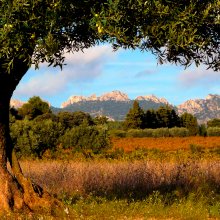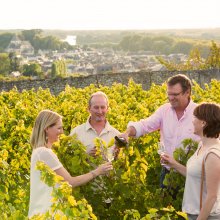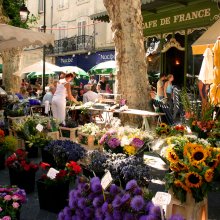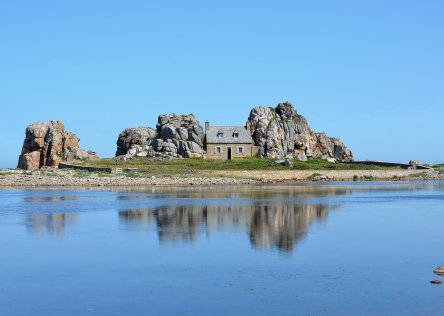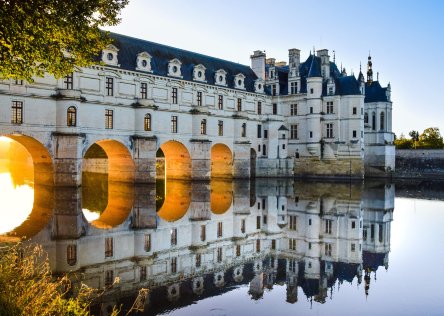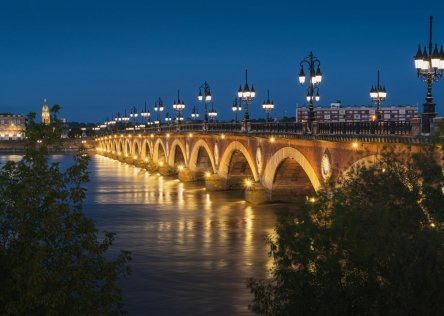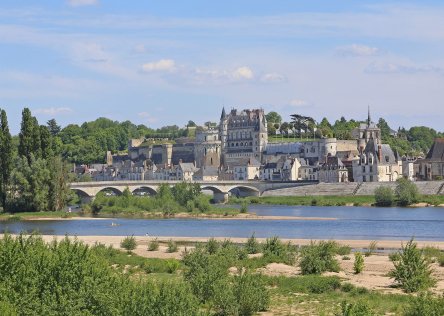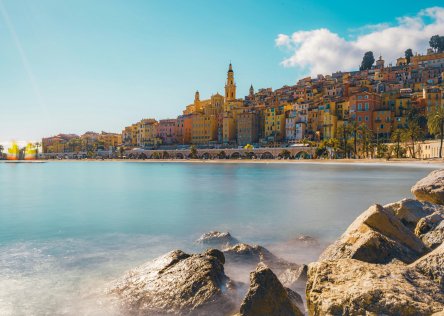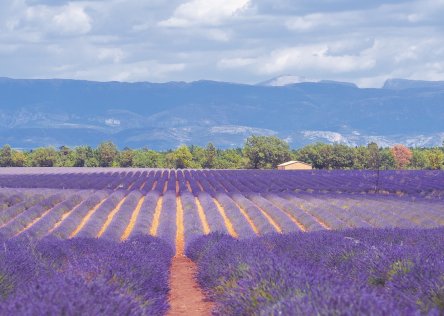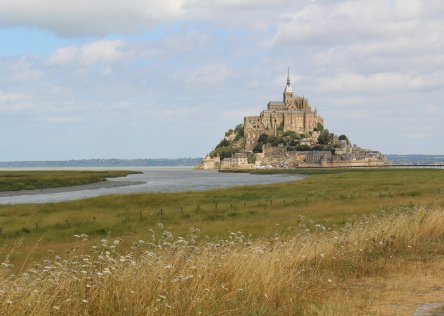Our favorite way to explore France’s diverse regions is by car, at our own pace, via the beautiful back roads. When we plan a French road trip itinerary just for you, we will help you discover France off the beaten track, away from the tourist crowds. We’ll immerse you in local cultures (and introduce you to the locals), regional cuisine, and take you through breathtaking landscapes.
Whether you’re interested in visiting vineyards and enjoying wine-tastings, exploring medieval towns, or soaking up the Mediterranean sun, our French road trips will make you feel right at home in la belle France.
At France Just For You, we provide a detailed itinerary (including accommodation and car hire), a personalized guidebook, MyFrance smartphone app, and plenty of insider tips.
Contact us today to tell us about your interests and wishes for your trip
In the meantime, to inspire your next France road trip, we’ve handpicked three of our popular France itineraries. All our itineraries can be adapted and tailored to your preferences and the time you have available.

©
Bev & Jeff
Itinerary 1: The “Tour de France”
16 days: Loire Valley → Bordeaux → Dordogne → Provence
This itinerary will take you through four fascinating and contrasting regions, with a balance of historic castles, world-famous vineyards, prehistoric caves, and Provençal landscapes.
Days 1–4: Loire Valley
Explore the lovely town of Amboise. Amboise’s narrow streets are lined with boutiques and cafés - take a stroll around and you’ll quickly get a sense of its inviting yet peaceful atmosphere.
Amboise Castle was once a royal residence and offers gorgeous views of the surrounding landscape. You may also like to visit Clos Lucé castle, Leonardo da Vinci’s final home. There you’ll see fascinating models of his inventions and learn more about his extraordinary life.
Go cycling along the Loire river and take in the peaceful surroundings. Along the way, you may stop and visit some more of the region’s chateaux.
Other castles we like to recommend are Château de Chambord, Chenonceau, and Azay-le-Rideau, all Renaissance masterpieces with beautiful riverside locations.
Browse one of the local morning markets, where you can sample fresh products from the region, such as goat cheese, artisanal bread, and other seasonal produce.
Visit the charming town of Chinon and enjoy a wine-tasting. If you travel with France Just For You, we’ll recommend a local winemaker who we know personally. She will walk you through the vines, explaining the winegrowing process and her particular approach, before guiding you through a tasting of Chinon and Bourgueil wines.
All our Loire Valley tours can be customized to suit your preferences
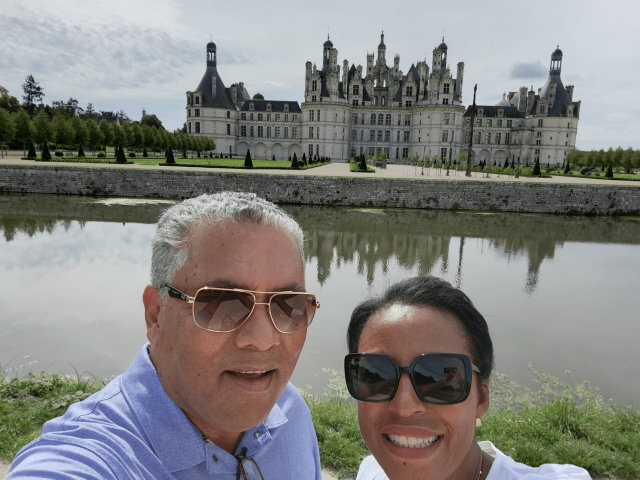
©
Eugene & Laura
Days 5–7: Bordeaux Region
If you’re a wine lover, a stop in Saint-Émilion to visit the Grand Cru Vineyards is a must. It can become a little busy with tourists, so we arrange for our travelers to stay in a Grands Crus Classés wine château, when they can enjoy private wine-tastings and breathtaking views of the surrounding vineyards.
The city of Bordeaux is a UNESCO World Heritage city. We recommend staying in the city center, as much of the city is walkable. Take a stroll along Sainte Catherine Street, Europe’s longest shopping boulevard, and admire the city’s grand 18th-century architecture.
We share many more suggestions of things to do in Bordeaux city in our Bordeaux road trip blog post. This includes places to visit on a walking tour of Bordeaux, and one of our preferred restaurants.
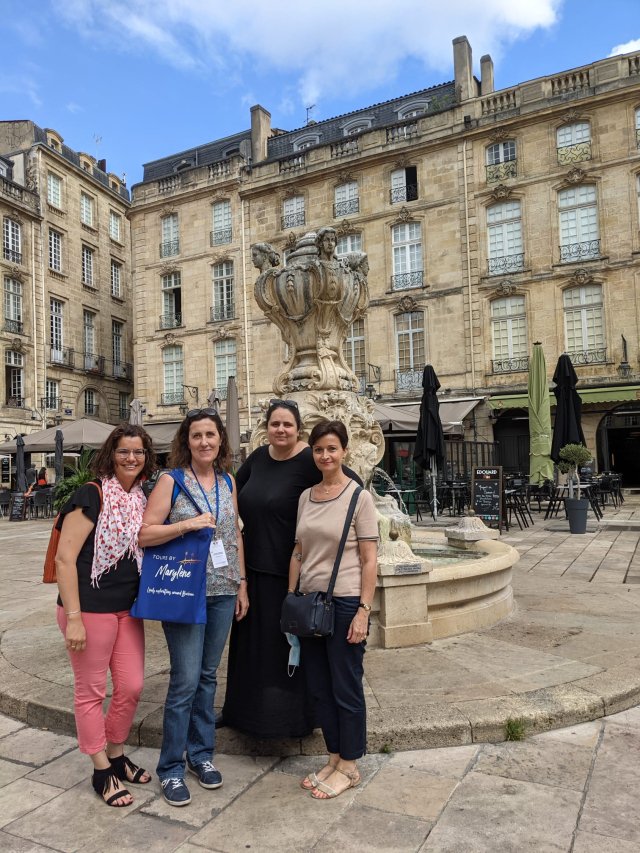
©
France Just For You
Days 8–11: Dordogne
Dordogne is famous for its stunning, dramatic landscapes and the fascinating insights it provides into prehistoric times.
You can see some examples of prehistoric cave art at Lascaux IV replica cave, or see original 15,000- to 20,000-year-old cave paintings at the Font de Gaume cave. Some caves, such as the original Lascaux cave, are closed to the public due to conservation reasons, and some of those that are open only allow a few dozen visitors to enter each day. If you book with us, we’ll do our best to arrange entry to one of our favorite caves with millennia-old polychrome cave paintings. Otherwise, be sure to arrive early on the day you wish to visit!
You shouldn’t miss Sarlat. Take your time to roam Sarlat’s cobbled lanes and take in the beautifully preserved medieval streets and honey-colored stone buildings. Try to visit on a Saturday and immerse yourself in the aromas of foie gras, truffles, and local cheeses at the Saturday market.
If you enjoy history, you may enjoy a private guided tour with a local history expert, who can take you on a nice walk while explaining whatever interests you about the history of the region.
A fun outdoor activity is to go kayaking along the Dordogne river. It’s peaceful and you’ll be surrounded by stunning rock formations, gorgeous landscapes and old stone houses that line the river.
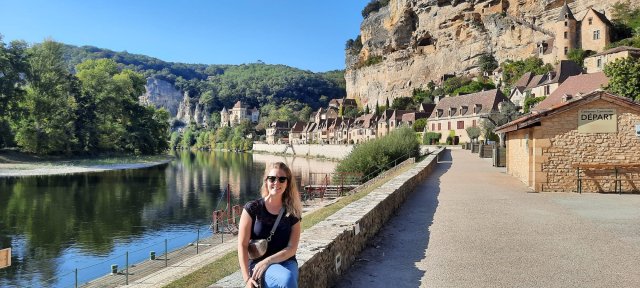
©
France Just For You
Days 12–16: Provence
Beautiful Provence is the place to explore charming off-the-beaten-path hilltop villages such as Gordes, Vaison-la-Romaine or Bedoin, with astounding views of the Provence landscape below.
We share some of our favorite scenic driving routes in Provence, including Mont Ventoux, in our Provence by Car blog post.
For our travelers that enjoy outdoor activities, we recommend some nice hiking routes near the Dentelles de Montmirail or biking tours on electric bikes in the Luberon. As you pedal past vineyards, olive groves, and lavender fields at a relaxed pace, a cycling tour is ideal for soaking up the region’s colors and scents.
History buffs will want to delve into Provence’s fascinating history. At Arles and Orange, you can visit well-preserved Roman sites, including the thermal baths of Constantine, the Forum Square, and the Roman Amphitheaters.
In Avignon, you may visit the Palace of the Popes, the former seat of the Pope during the 15th century.
For foodies, Truffle hunting is a really fun activity you can do in various parts of France, including Provence. Head out with some passionate truffle hunters and their experts (specially-trained truffle-hunting dogs) and they will help you dig up some truffles in the wild. After, you can enjoy a snack with the truffles you have found!
If you would like us to plan a trip like this just for you, and customize it to your own preferences, contact trip planners Emilie, Laura and Clelia, and we will get back to you within one working day!
You may see the “The Tour de France” itinerary here.
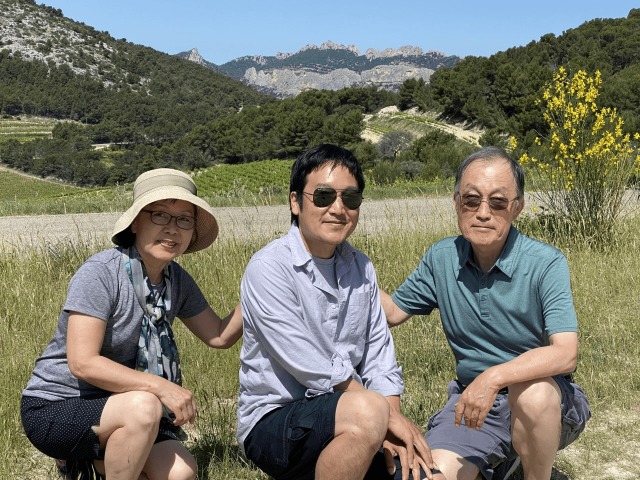
©
Kim Family
Itinerary 2: Normandy & the Loire Valley Loop
13 days: Giverny → Bayeux → Mont Saint Michel → Loire Valley
This itinerary will be like stepping into a storybook world of Impressionist gardens, world war history, medieval fortresses, and Renaissance châteaux in two of France’s most welcoming regions.
Days 1–2: Giverny
Drive to Giverny and visit Monet’s garden, the place where Claude Monet lived and painted his famous waterlilies. Monet’s flower gardens and the famous water lily pond are gorgeous to see at any time of year, as they’re continually changing with the seasons. You’ll see why Monet felt inspired to paint them so many times over the years.
You won’t see any of his paintings in Giverny, but if you’re spending some time in Paris, you can see many of them in the Monet Marmottan Museum or the Orangerie Museum.
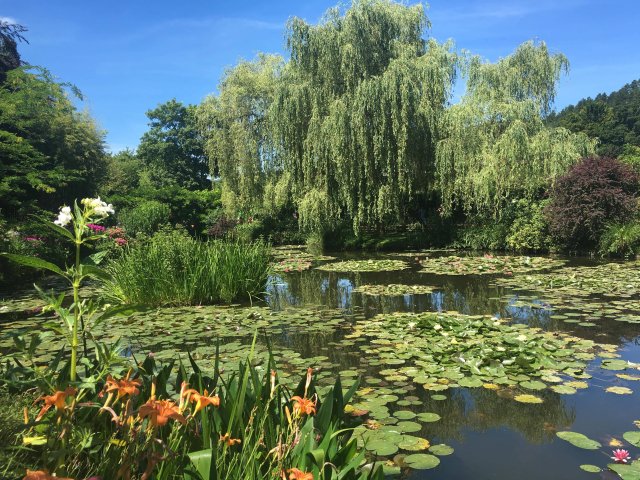
©
Ben & Jane Lintott
Days 3–4: Bayeux & D-Day Beaches
In Bayeux’s old town, you will stroll among half-timbered houses, admire the grand Gothic Notre Dame cathedral, and enjoy a meal, if you like. For a sweet or savory crepe, we recommend Le Moulin de la Galette restaurant
Needless to say, a visit to the Bayeux Tapestry Museum will be a must for history buffs. There hangs the nearly 1,000-year-old Bayeux Tapestry, a remarkable masterpiece portraying the Norman Conquest of England by William the Conqueror.
From Bayeux, you can easily drive to the D-Day beaches, where you can see WWII monuments, visit museums or arrange for a tour guide to take you to the key WWII sites, depending on your interests. British travelers may be most interested in visiting Gold or Sword beach (where mainly British troops landed on June 6th, 1944). American travelers will likely want to visit Omaha or Utah beach, while Canadian travelers may be more interested in visiting Juno beach. We also recommend a visit to Arromanches’ artificial harbor and one of the local war cemeteries.
If you book one of our Normandy tours, we can arrange for you to do a tour of the Normandy beaches with one of our preferred expert tour guides.
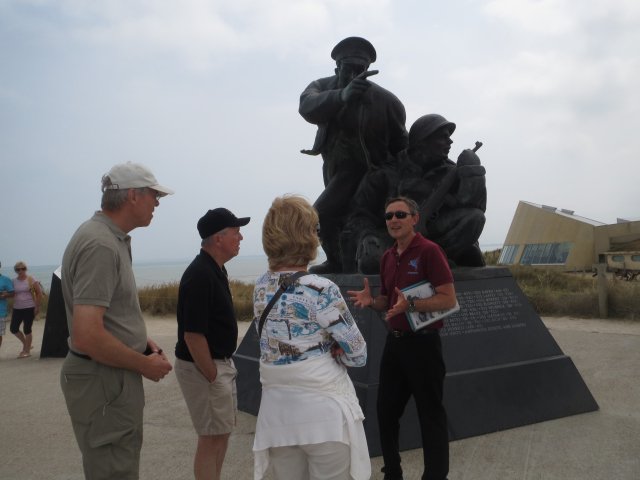
©
Christophe Rault
Days 5–7: Mont Saint-Michel & Saint-Malo
Many of our travelers want to visit Mont Saint Michel Abbey, a UNESCO World Heritage Site that sits on an islet off the coast of Normandy/Brittany.
It’s worth doing a guided tour to explore the hidden backstreets of the islet (away from the crowds), hear about centuries-old monastic traditions, and discover the myths and legends of the island.
If you book with France Just For You, we can arrange for you to stay in a typical French château 30 minutes’ drive across the bay.
The next day, it’s a short drive to beautiful Saint-Malo in Brittany. Its cobbled streets and towering granite ramparts tell tales of privateers and World War II history. If you enjoyed the novel All the Light We Cannot See (a wonderful novel by Anthony Doerr set in Saint-Malo during the war), we can arrange a self-guided walking tour that will take you to the key spots featured in the novel.
After exploring the walled citadel, take a stroll or relax on the Plage du Môle, a sandy beach that’s ideal for swimming. For lunch, taste the local Breton delicacies—fresh oysters and savory crêpes!
Here are more suggestions for things to do in Saint-Malo
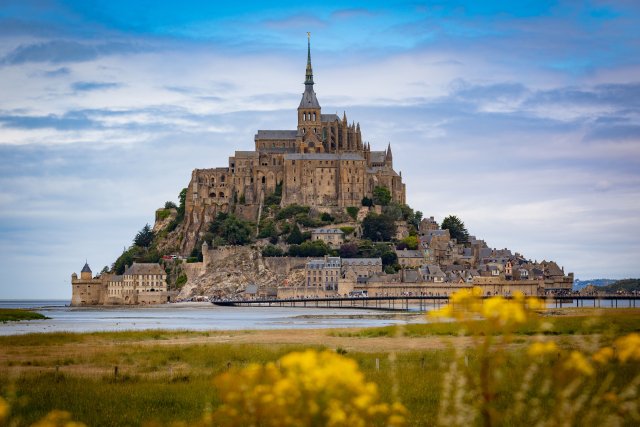
©
Days 8–12: Loire Valley
Your next adventure will be in the Loire Valley, also known as ‘the garden of France’ for its fertile lands and manicured gardens.
Castles
Visiting some of the Renaissance châteaux will likely be high on your agenda. Our favorites include the Chateau de Chambord, including its recently renovated and restored French formal gardens.
Chateau de Chenonceau and its idyllic setting across the Le Cher River is also a must. Its gardens are also beautiful and there are always stunning floral arrangements inside the castle too.
A lesser-known hidden gem is the Chateau de I’Islette. It tends to attract fewer tourists, and the garden and lakeside setting is an ideal place for a picnic. It’s a privately-owned castle, and on occasion, you may even see the owner fishing in the lake!
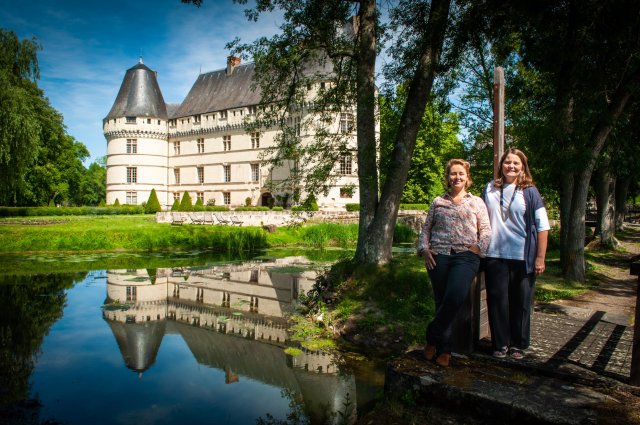
©
France Just For You
Gardens
If you enjoy gardening or visiting gardens, the gardens of Villandry should NOT be missed! From checkerboard vegetable gardens to a romantic ornamental garden featuring sculpted hearts and unmatched symmetry, Villandry is a visual spectacle, and a garden you won’t forget. You may also enjoy exploring its maze and water garden. In our opinion, visiting the castle isn’t a must.
At the Chateau de Chaumont-sur-Loire, you can experience the International Garden Festival from mid-April through early November. Each year, professional gardeners and landscape architects create their own garden based around their interpretation of the theme for the year. In 2025, the festival’s theme is tales and poetry.
Towns and Villages
The towns and villages of the Loire Valley are also lovely to explore. We particularly like to recommend the towns of Amboise, Chinon, and Saumur for their picturesque settings, and the beautiful villages of Montsoreau and Chédigny.
Cycling
Many of our travelers enjoy hiring bicycles or electric bikes and taking them along the scenic riverside cycling routes. You can stop and take some lovely photos with the castles in the background, which you’ll discover along the way.
Wine-lovers will want to reserve at least half a day to enjoy a wine-tasting at a local winery or vineyard.
When you book one of our Loire Valley tours, we’ll suggest unique activities you may not have thought of.
From playing pickleball in a chateau garden, to exploring the region in a vintage sidecar, or visiting a goat farm and tasting some fresh goats’ cheese - we have a suggestion for all tastes!
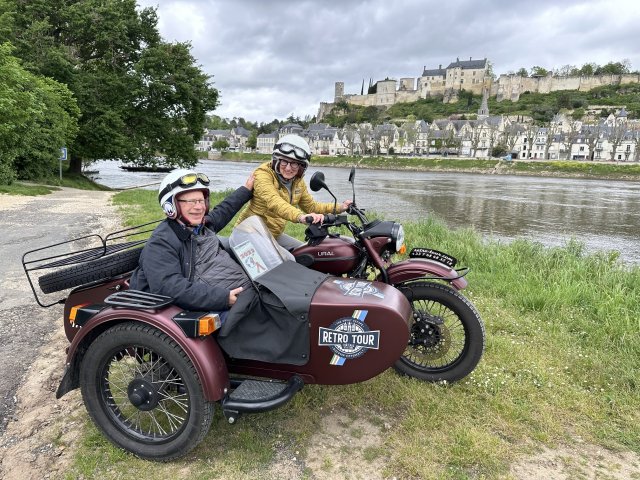
©
Kathy and George
Day 13: Head Home or Continue On
After an unforgettable trip, it’s time to head home or journey onward to your next destination!
Interested in discovering the landscapes and heritage of Normandy and the Loire’s Valley?
Itinerary 3: From Paris to Nice at Your Own Pace
20 days: Paris → Burgundy → Provence → French Riviera
This extended itinerary covers some of France’s most diverse and picturesque regions. It’s perfect for independent travelers who want to experience France’s urban elegance, peaceful vineyards, Provençal charm, and Riviera glam - all at your own pace.
Days 1–4: Paris
We arrange for our travelers to stay in a lovely boutique hotel that’s close to everything. We have favorites in Le Marais, St Germain and Latin Quarter districts.
Historic Marais District
You may start your day with a stroll around the Marais neighborhood. Le Marais is home to one of the oldest streets in Paris, rue des Rosiers. It’s the heart of the Jewish Quarter and has many traditional delis and bakeries that still use the recipes that have been passed down for generations. The Musée Carnavalet is a hidden gem in the neighborhood documenting the history of the City of Paris from prehistoric times to the modern day.
Once a swamp, Le Marais was transformed into an aristocratic neighborhood filled with hidden courtyards, mansions, and winding alleys. It’s also home to Marché des Enfants Rouges, Paris’s oldest covered market, dating back to 1615. There you’ll find local produce, flowers, and an eclectic range of street food and global cuisine.
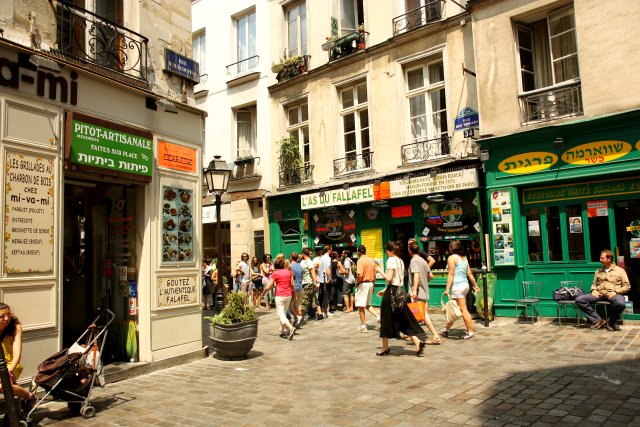
©
Paris on Foot or by Bike
For a great overview, consider a guided bike tour or join a local on a walking tour. You’ll see iconic Paris landmarks like the Louvre museum, the Latin Quarter, and the Seine River.
If you’re traveling with us, we’ll share our favorite Paris walking routes and secret spots where Parisians love to hang out.
Culinary Delights
Between rides on the Métro and leisurely walks, make sure to sample the best of Parisian cuisine—from crêperies to cozy boulangeries to some wonderful bistros. Be serenaded at Bel Canto restaurant, enjoy a wine-tasting at O Chateau, or try a Baba au Rhum cake at Stohrer pâtisserie, one of the oldest bakeries in Paris.
We include recommendations for our favorite pâtisseries and wine bars in your personalized guidebook, so you can enjoy the city’s gastronomic scene like the Parisians do.
Here are some suggestions for some alternative things to do in Paris
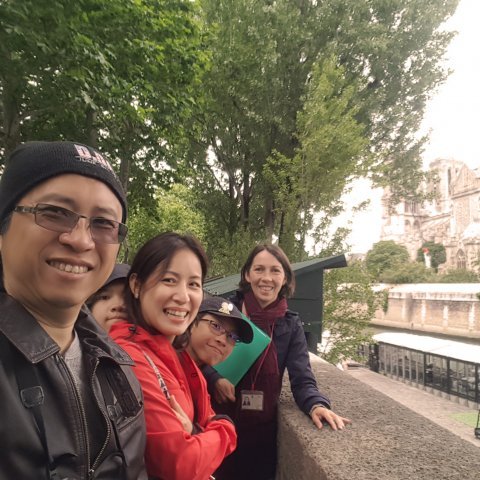
©
Khaw Family
Days 5–7: Burgundy
It will take about three hours to drive south from Paris to Burgundy. We love to have our travelers stay in a gorgeous mansion located between Dijon and Beaune, surrounded by the Côtes de Nuits vineyards. It’s the perfect jumping off point for exploring Burgundy by car.
Dijon & Beane
Two must-see towns are Dijon, with its medieval lanes and food market hall, and Beaune, home to the Hospices de Beaune, a 15th-century charitable hospital adorned with a colorful tiled roof. Don’t miss tasting the region’s famed Epoisses cheese, which pairs beautifully with the local red wines.
Hiking and Biking
There are some gorgeous hiking trails in Burgundy that take you through the countryside and villages (we’ll recommend our favorite sections to our travelers depending on their wishes).
Cycling enthusiasts may enjoy exploring The Greenway or The Voie Bleue cycling routes, admiring vineyards, the Saône river, and towns and villages along the way.
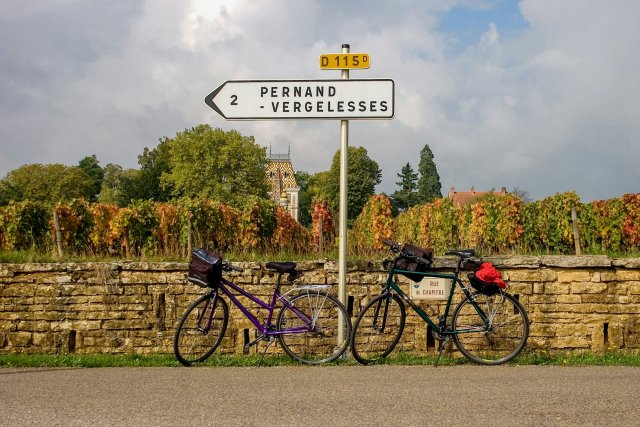
Vineyards & Wine-tastings
When it comes to wine-tastings, wine cellars and vineyard tours, you will be spoiled for choice in Burgundy!
If you go on one of our self-drive tours in Burgundy, we can arrange for you to explore the vineyards off the beaten track with a local wine expert. Sebastian will take you in his jeep through vineyards and to a local winery that you wouldn’t discover on your own! (We are all about helping our travelers escape the tourist crowds and having the most authentic experience of France!). Since Sebastien will be driving, you’ll be able to indulge in tastings of red and white Burgundies to your heart’s content!
For wine-tastings, we particularly like the Domaine Thierry Violot-Guillemard in the village of Pommard, ten minutes’ drive from Beaune.
UNESCO sites
If you’re interested in religious and/or architectural history, we recommend visiting the following UNESCO World Heritage sites. Fontenay Abbey dates back to 1118 and is one of the oldest and best preserved Cistercian abbeys in Europe. Vézelay Abbey is a 12th-century Benedictine and Cluniac monastery, exemplary of Burgundian Romanesque architecture.
We warmly invite you to browse our Burgundy tours
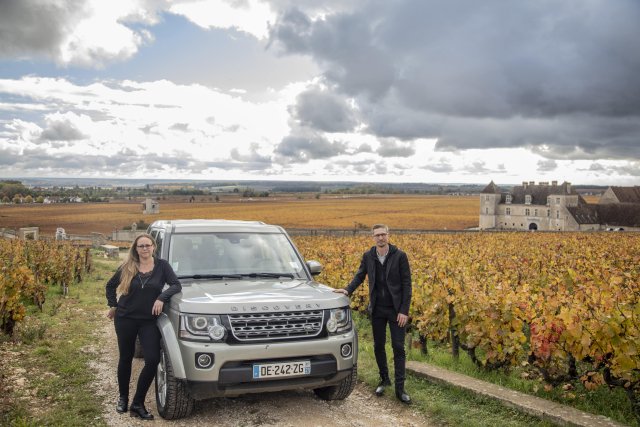
©
Sebastien & Eve
Days 8–11: Northern Provence
Northern Provence is about a 3.5-hour drive from Burgundy.
Avignon
Spend a day in Avignon, the “City of Popes.” Once the papal seat in Europe, Avignon is home to the Palace of the Popes, one of the largest Gothic palaces in Europe. Hike up to the Rocher des Doms park to admire the views across Avignon, including the remains of the Pont d’Avignon Roman bridge.
Off-the-beaten-track villages
Take the opportunity to drive to some of the off-the-beaten-path villages in this region on market day. Our blog post on markets in Provence gives you a market to visit on every day of the week, including Vaison-la-Romaine, Bédoin and Gordes. Be sure to get there early, as they’re normally only open in the mornings. You’ll find local products such as fresh olives, lavender and herbs, and handicrafts. The local markets are a great place to pick up some supplies for a picnic lunch!
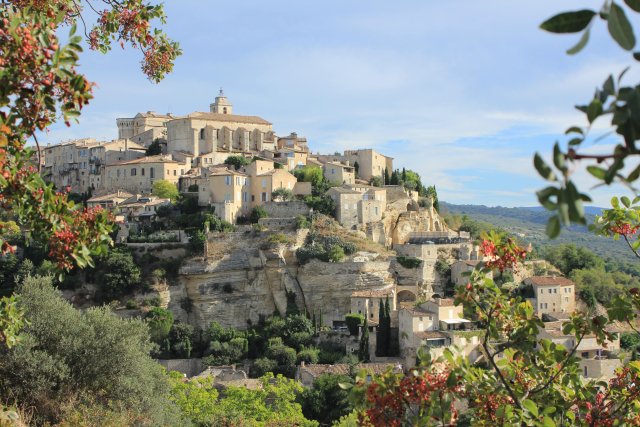
©
Mont Ventoux
The area around Mont Ventoux, the highest mountain in Provence, would be great to include in your French road trip itinerary. On a fine day you’ll enjoy stunning panoramic views across the region.
Keep in mind that the last section of the roads that lead to the summit are normally closed from late November through mid-April or May. So if you’re traveling to France in November or May, be sure to check that the roads are open before heading out.
Also keep in mind that these routes around Mont Ventoux are extremely busy in the peak summer season with both drivers and cyclists, and can be tricky to drive. If you travel with us, we will share our insiders’ tips with you on how best to navigate this area with ease and still enjoy some marvellous scenery.
The Lavender Road
Driving around Mont Ventoux until it joins the lavender road in Sault can be an excellent option in the late spring and summer.
Here we share some of our favorite scenic routes for exploring Provence by car.
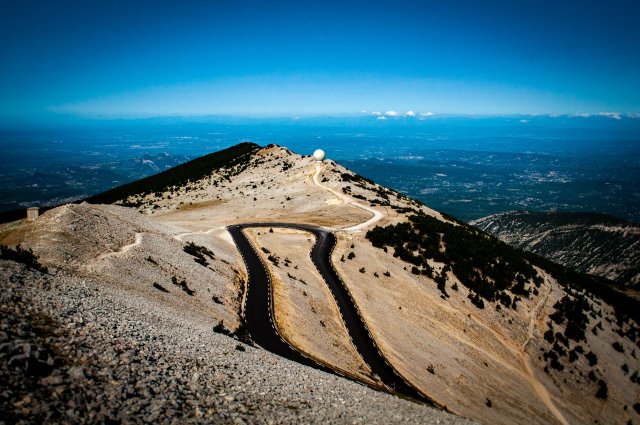
©
Days 12–15: Southern Provence
Aix-en-Provence
At the foot of Montagne Sainte-Victoire is the city of Aix-en-Provence, locally referred to as ‘Aix’. This charming Provençal town of elegant boulevards and fountain-lined squares was home to artist Paul Cézanne, who regularly depicted the region’s stunning landscapes in his paintings. You may visit his artist’s studio, the Atelier Cézanne, which has been preserved much as he left it. Then enjoy a scenic drive through the surrounding countryside that inspired his work.
Take a stroll along the famous tree-lined Cours Mirabeau, admire its 17th-century mansions, and stop for a pastry at one of the nearby cafés. We also recommend trying Aix’s signature sweets, calissons (sweet almonds).
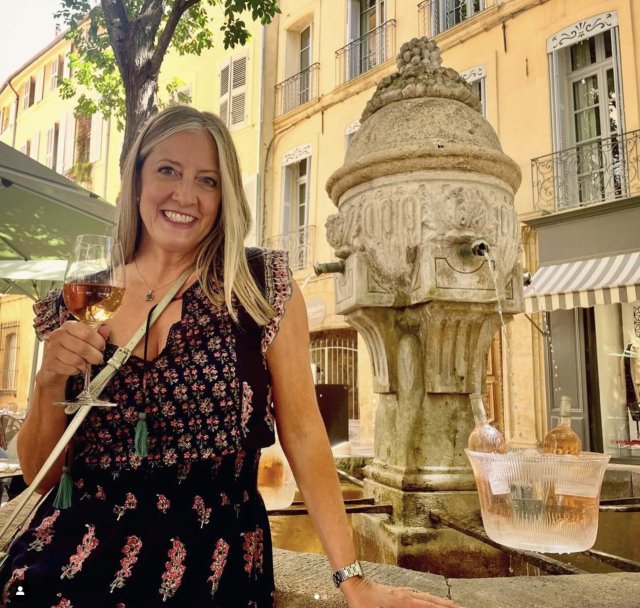
©
Martina & Simon, UK
Marseille
A short drive from Aix-en-Provence is France’s second-largest city, Marseille, a lively Mediterranean port city known for its bustling Vieux Port and multicultural heritage and vibe.
Be sure to explore the historic Le Panier district with its colorful street art, charming cafés, and artisan boutiques. For panoramic views over the city and sea, visit the Notre-Dame de la Garde basilica that sits atop a hill overlooking the harbor.
Food lovers won’t want to miss the chance to try an authentic bouillabaisse, Marseille’s famous fish stew. Drive about 15 minutes to the Vallon des Auffes, which is where the most famous restaurants serving bouillabaisse are located.
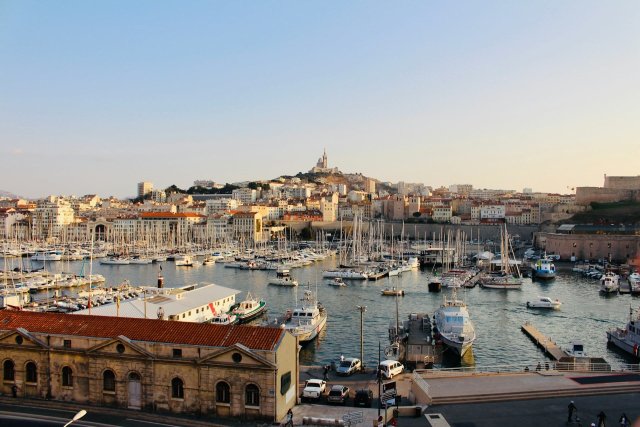
©
Cassis and the Calanques National Park
Just east of Marseille, Cassis is a picturesque fishing village with pastel-colored houses and a scenic harbor. It’s also the gateway to the spectacular Calanques National Park, where towering limestone cliffs meet crystal-clear turquoise waters and form gorgeous little creeks.
You can visit the calanques on a boat tour, or if you enjoy hiking, you may take a scenic walk from Cassis to Port-Miou and Port-Pin, two of our favorite creeks. Leave early to avoid the crowds, or to avoid the hottest time of day during the summer months.
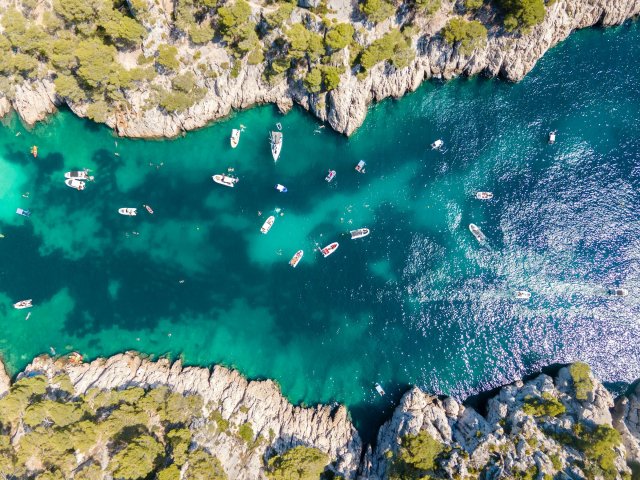
©
The Alpilles: Timeless Provençal Scenery
To the north of Aix-en-Provence, the Alpilles region is a stunning landscape of rocky hills, olive groves, and cypress-lined roads, dotted with charming villages and ancient ruins.
In Saint-Rémy-de-Provence, you can visit the Saint-Paul-de-Mausole Monastery, where Vincent van Gogh painted some of his most famous works while undergoing treatment for mental illness.
You may also like to visit Arles, where he also lived for a period, and visit the sites that inspired some of his paintings. In addition, Arles has numerous stunningly preserved Roman sites that are worth visiting, including the amphitheater and Constantine’s thermal baths.
Thirty minutes’ drive from Arles, the medieval village of Les Baux-de-Provence offers dramatic castle ruins and sweeping views over the Alpilles, the Camargue and Arles. Visit at the end of the day to enjoy the gorgeous sunset after the tourist crowds have left.
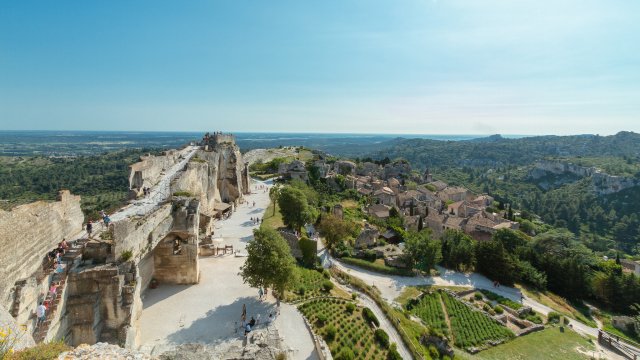
©
Pierre Selim, Wikimedia Commons, CC BY-SA 4.0
Roman Ruins & Hilltop Towns
Reserve half a day to visit the Pont du Gard, a UNESCO World Heritage site. This awe-inspiring aqueduct dates back to the 1st century AD. If you enjoy outdoor activities, we also recommend kayaking along the river if you’re visiting outside of peak season (the river gets extremely crowded in July and August).
Truffle hunting
If you’re interested in trying some local products straight from the earth (almost!) and meeting some friendly locals, we recommend going truffle hunting! The specially-trained dogs are the experts and will lead the way. Their owners will explain more about where truffles grow and how to dig them up (which you can participate in). At the end of the hunt, you’ll enjoy a delicious snack that includes the truffles you’ve just found!
Truffle-hunting is a popular activity among our travelers who book our Provence tours.

©
Carol & Bruce from the USA
Days 16–20: The French Riviera - The Road to Nice
The southern city of Nice is about two hours’ drive from Aix-en-Provence if you go direct.
Verdon Gorge
However, you may like to leave early and take the scenic route via the gorgeous Verdon Gorge, often referred to as the ‘Grand Canyon of Europe’.
Charming villages
You may like to take the opportunity to explore some of the off-the-beaten-track villages near the gorge:
The village of Moustiers-Sainte-Marie is at the foot of the Verdon Gorge and famous for its traditional ceramics and breathtaking setting, with charming stone houses built into the cliffs.
With its medieval streets and pretty riverside setting, Castellane is a pleasant place to soak up the local atmosphere.
Aiguines is located above the Verdon River and offers spectacular views of the surrounding mountains and Lac de Sainte-Croix, making it a perfect stop for scenic walks and photography.
Riez was a former Roman settlement, and is home to ancient columns that hint at its long history.
Located just south of the Verdon Gorge, Gréoux-les-Bains is a spa town known for its thermal baths, and where visitors have been enjoying the restorative waters for centuries.
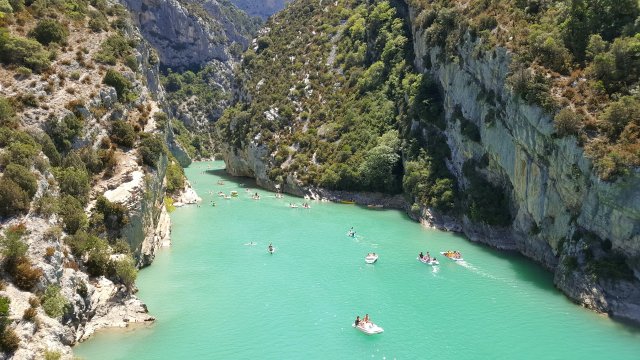
©
Nice and the Mediterranean Coast
Once you arrive in Nice, the last stop on this French road trip itinerary, you can stretch your legs on the famous Promenade des Anglais. Enjoy a stroll along the waterfront or explore the Old Town, including the lively Cours Saleya market.
Art lovers may like to visit the Matisse or Chagall Museums, or the Picasso Museum along the coast in Antibes. Architecture buffs can wander among 19th-century villas overlooking the sparkling sapphire coves of the Mediterranean. One of our favorites to recommend, with gorgeous views of the Riviera and lovely gardens, is Villa Ephrussi de Rothschild.
If you enjoy gardening, a visit to the Exotic Garden in Èze is also a must. And if you’d like to escape the biggest tourist crowds of the French Riviera, spend half a day in the lovely town of Menton near the Italian border, or take a boat to the Lérins Islands.
Heading Inland
You may like to visit the world’s perfume capital, Grasse, for a perfume workshop. Or head to Saint-Paul-de-Vence, a medieval village with art galleries and inviting café terraces—a perfect spot for people-watching.
Ready to tour France from the City of Lights to the Mediterranean at your own pace?
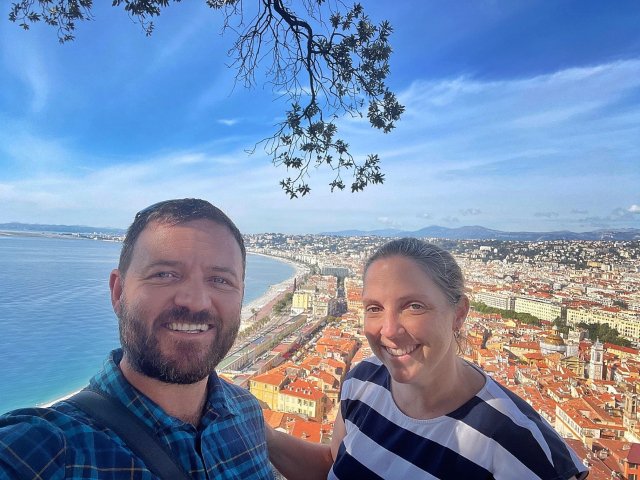
©
Jonty & Felicity from New Zealand
—
All our self-drive tours of France can be customized according to your wishes, and include:
-
Accommodation in premium French B&Bs or boutique hotels that we have visited, tested, and selected just for you
- Car rental with automatic transmission and full insurance coverage for your whole trip
- At least one hosted dinner with your B&B hosts and fellow travelers
- A ‘concierge in your pocket’: you can contact us at any time, for any reason, while you’re in France
- A personalized guidebook just for your trip, with all addresses, road maps, recommended daily itineraries, places, and activities
- MyFrance smartphone app, containing your entire itinerary, contacts, pre-booked tickets, GPS destinations (connected to your cell phone's GPS app), and the weather wherever you are in France.
If a road trip around France sounds ideal to you but the idea of planning it yourself sounds a bit daunting, leave it to us!

©
We’re locally-based experts and we’ve visited all the places and accommodations we recommend. This is how we know you’ll be comfortable, have an unforgettable experience, and receive a warm French welcome wherever you go!
Browse our France itineraries to find your ideal France tour package or contact us and tell us about your hopes and wishes for your French road trip!
FAQ
Is France good for a road trip?
Absolutely! France is a fantastic country for a road trip, offering well-maintained roads, scenic countryside routes, and diverse landscapes. Whether you want to explore vineyards and châteaux in the Loire Valley, coastal villages along the French Riviera, or medieval towns in Normandy, driving allows you to experience parts of France and French culture you wouldn't encounter on an organized tour. And best of all, it allows you to pick and choose exactly where you want to go, and explore at your own pace.
With charming stops along the way, great food, and plenty of hidden gems, we can plan a unique French road trip itinerary just for you, to help you explore the country beyond the major cities.
Is driving in France difficult for Americans?
Driving in France is absolutely manageable for Americans, especially with a little preparation. While traffic rules differ slightly, the road system is well-signposted, and highways are in excellent condition. Key things to keep in mind:
- France drives on the right side of the road (just like the U.S.).
- Most rental cars have manual transmission, so be sure to request an automatic car in advance, if needed.
- Some highways have toll roads (péages)—these can be paid by card or cash.
- Roundabouts are common, and traffic within the roundabout has the right of way.
With a GPS or navigation app (such as Waze), driving in France is straightforward, and our France Just For You self-drive tours include a personal guidebook compiled just for your tour, detailed road maps and our MyFrance travel app to make navigation even easier.
For more tips, check our comprehensive guide on driving in France.
What is the best time to visit France?
The best time to visit France depends on what you want to experience. In general, spring (April–June) and fall (September–October) are ideal for a road trip, as there is more likely to be pleasant weather and fewer tourist crowds.
- Spring (April–June): Blooming flowers, vibrant markets, and comfortable temperatures for sightseeing and outdoor activities (check our blog post on France in spring for more information).
- Summer (July–August): Great for beaches and festivals, but it’s also the busiest time, with busier roads and larger crowds all over France, especially on the coasts and in popular regions like Provence and the French Riviera.
- Fall (September–October): Beautiful autumn colors, grape harvest season in wine regions, and milder temperatures makes fall perfect for French road trips.
- Winter (November–March): A quieter, more intimate experience with festive Christmas markets in cities like Strasbourg and Paris. Some rural areas may be less active, with some museums and restaurants closed or with reduced opening hours during winter. But generally it’s a great time to visit for indoor cultural experiences.
For the best balance of good weather and fewer tourists, consider planning your French road trip itinerary in May, June, September, or early October.


